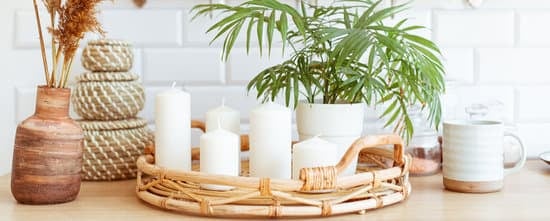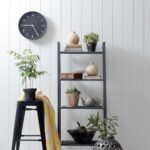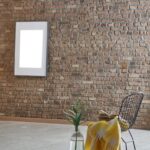How did the Romans decorate their homes? The ancient Roman culture placed great importance on home decoration, with a focus on creating beautiful and functional living spaces.
From wall paintings to furniture and outdoor gardens, Roman homes were adorned with various elements that reflected the artistic and cultural values of society. This article will explore the different aspects of Roman home decoration, providing insight into the architectural layout, wall decorations, furniture, textiles, sculptures, lighting, and outdoor spaces commonly found in Roman households.
In ancient Rome, the home was considered a reflection of an individual’s status and taste. The decoration of a home was not only a matter of personal preference but also symbolized one’s wealth and social standing.
Understanding how Romans decorated their homes offers a glimpse into their daily lives and aesthetic sensibilities. By examining the architectural features, interior decor, and outdoor arrangements of Roman homes, we can gain valuable insights into the artistic and cultural values of this ancient civilization.
As we delve into the different aspects of Roman home decoration, it becomes clear that each element served a purpose beyond mere ornamentation. From practical considerations to religious symbolism, every detail inside and outside of a Roman home was carefully curated to create a harmonious and visually striking living environment. By exploring how Romans decorated their homes, we can appreciate the enduring legacy of their design principles on modern interior decor and gain inspiration for our own living spaces.
Architecture and Layout of Roman Homes
The ancient Romans placed great importance on the design and layout of their homes, and this is reflected in the architectural features of Roman dwellings. The typical Roman home, known as a domus, was centered around an open-air courtyard known as an atrium.
This central space served as a gathering area for the family and would often have a shallow pool or basin to collect rainwater. Surrounding the atrium were various rooms used for living, dining, and sleeping, with wealthier households having multiple levels and more extensive layouts.
Interior Spaces
In addition to the atrium, Roman homes also featured other interior spaces such as the tablinum, which was used as a reception room or office, and the triclinium, a formal dining room. These spaces were often adorned with decorative elements such as wall paintings, sculptures, and furnishings to create aesthetically pleasing environments that showcased the wealth and status of the homeowners.
Courtyards and Peristyles
Beyond the atrium, many Roman homes also included additional outdoor spaces such as peristyles – open courtyards surrounded by columns. These areas provided natural light and ventilation while also serving as places of leisure and entertainment. Gardens with lush vegetation and fountains were also commonly incorporated into these outdoor spaces to enhance their visual appeal. Overall, the architecture and layout of Roman homes were carefully planned to create harmonious living environments that embraced both indoor and outdoor elements.
Wall Decorations and Paintings
The use of wall decorations and paintings played a significant role in the interior design of ancient Roman homes. Frescoes, murals, and mosaics were common artistic features that adorned the walls of Roman residences, adding aesthetic appeal and cultural significance to the living spaces.
1. Frescoes:
–
–
2. Murals:
–
–
3. Mosaics:
–
–
The use of frescoes, murals, and mosaics in Roman home decoration reflected the artistic prowess of the time while also serving as a reflection of social status and cultural values within Roman society. These wall decorations continue to inspire contemporary interior design with their timeless beauty and enduring appeal. For anyone interested in learning more about this aspect of Roman home decoration, further resources on this topic are highly recommended for a deeper understanding.
Furniture and Furnishings
The Romans were known for their exquisite taste in furniture and furnishings, which played a crucial role in the decoration of their homes. Here are some of the common types of furniture and furnishings found in Roman homes:
- Couches: The Romans often used low couches for seating during meals and gatherings. These couches were typically made of wood or metal and adorned with cushions for added comfort.
- Chairs: In addition to couches, Roman homes also featured various types of chairs, including folding stools, armchairs, and dining chairs. These chairs were often crafted with intricate designs and sometimes featured decorative carvings.
- Tables: Roman tables came in a variety of shapes and sizes, ranging from small side tables to large dining tables. They were typically made of wood or marble and used for dining, displaying decorative items, or playing games.
- Storage: Storage was an essential consideration in Roman homes, leading to the use of cabinets, chests, and shelving units to keep household items organized. These storage pieces were often adorned with ornate carvings or painted details.
The materials used for constructing these furniture pieces varied widely, with wealthy Romans opting for luxurious materials such as marble, ivory, or exotic woods. The designs also reflected the artistic flair of the time, featuring intricate carvings, inlays, and ornamental details that added to the overall aesthetic appeal of Roman interior decor.
Textiles and Textile Decorations
The use of textiles played an essential role in the decoration of Roman homes, adding warmth, color, and luxury to interior spaces. From curtains and rugs to tapestries and bed linens, textiles were used extensively for both practical and decorative purposes.
Textiles as Decorative Elements
Roman homes often featured richly colored textiles such as silk, wool, and linen, which were used to create a sense of opulence and comfort. Textiles were employed not only for functional items like curtains to control light and provide privacy but also for purely decorative purposes. Intricately woven tapestries adorned the walls of wealthy Roman homes, depicting scenes from mythology, history, and everyday life.
Popular Patterns and Colors
In terms of patterns, Romans favored bold geometric designs alongside floral motifs inspired by nature. The colors used in Roman textiles varied widely with rich tones such as deep reds, vibrant greens, royal blues, and golden yellows dominating the palette. These colors were achieved through the use of natural dyes derived from plants, insects, and minerals.
Integration With Other Decorative Elements
Textiles were often integrated with other decorative elements in Roman homes. For example, rugs served not only to insulate floors but also as showcases for artistic designs. Tapestries might complement or contrast with painted wall decorations such as frescoes or murals. Overall, textiles played a crucial role in creating a sumptuous and visually striking environment within Roman homes.
Sculptures and Statues
The use of sculptures and statues to adorn the interior and exterior of Roman homes was an integral part of home decoration in ancient Rome. Sculptures played a significant role in Roman society, often depicting gods, mythological figures, historical individuals, and even animals. These statues were not only decorative but also held symbolic and religious significance for the Romans.
Sculptures and statues were made from various materials such as marble, bronze, and terracotta. Marble statues were highly valued and often used to depict gods and esteemed individuals. Bronze was also a popular material for sculptures due to its durability, allowing for detailed and intricate designs. Terracotta was used for more affordable statues that could be mass-produced for widespread decoration.
The placement of sculptures within Roman homes varied depending on the specific statue’s purpose and meaning. In atriums or courtyards, larger-than-life sculptures of gods or mythological figures were common, adding a sense of grandeur to the space. In interior rooms, smaller statues might be displayed on shelves or pedestals, showcasing the owner’s appreciation for art and culture.
| Material | Significance |
|---|---|
| Marble | Highly valued, often used to depict gods and esteemed individuals |
| Bronze | Durable; allowed for detailed designs |
| Terracotta | Affordable material allowing mass production |
Lighting and Accessories
Romans paid great attention to the lighting and accessories in their homes, recognizing their importance in creating a comfortable and visually appealing living space. Lighting played a crucial role in Roman homes, as they relied on natural light during the day and various lighting sources at night.
Lamps were an essential part of Roman interior design, with many different types of lamps used for both practical and decorative purposes. These lamps were often made from materials such as bronze, pottery, or glass, and could be suspended from the ceiling or placed on tables and other surfaces.
In addition to lighting, Romans also incorporated a variety of accessories into their homes to enhance their visual appeal. Decorative items like vases, pottery, and mirrors were commonly used to adorn the interior spaces of Roman homes. These accessories served both aesthetic and functional purposes, adding beauty to the decor while also serving practical needs. Mirrors were particularly valued for their reflective properties and were strategically placed to maximize the distribution of natural light within the home.
The use of decorative accessories extended beyond purely ornamental items to include practical objects that also added visual interest to the home. Bookcases, storage chests, and even small sculptures were used not only for their utility but also as elements of decoration within Roman households. The careful selection and arrangement of these objects were an important aspect of Roman interior design, contributing to the overall atmosphere and style of the home.
Gardens and Outdoor Spaces
The Romans had a deep appreciation for the outdoors and integrated nature into their daily lives. This was reflected in their approach to decorating their gardens and outdoor spaces, which were considered an extension of the home. Roman gardens were designed to be both beautiful and functional, often featuring a variety of plantings, fountains, and sculptures.
One of the key elements of Roman garden design was the use of landscaping to create visually striking compositions. Gardens were meticulously laid out with geometric patterns, pathways, and carefully planned arrangements of flowers, shrubs, and trees.
The Romans also utilized water features such as fountains, ponds, and canals to add a sense of tranquility and elegance to their outdoor spaces. These elements combined to create a harmonious and aesthetically pleasing environment that could be enjoyed from both inside the home and while strolling through the garden.
In addition to plants and landscaping, Roman gardens were adorned with various sculptures and statues. These often depicted mythological figures or celebrated individuals, adding a sense of grandeur and significance to the outdoor space. The presence of these sculptures not only added to the visual appeal of the garden but also served as markers of status and cultural significance for the homeowner.
Conclusion
The Romans were known for their impressive and intricate home decorations, which played a significant role in their daily lives. From the architecture and layout of their homes to the smallest details of lighting and accessories, Roman interior decor was a reflection of their culture, values, and artistic achievements.
The use of wall decorations and paintings, such as frescoes, murals, and mosaics, was a common practice in Roman homes. These artworks depicted various scenes from everyday life, mythology, and historical events. The skillful techniques used by Roman artists in creating these wall decorations showcase the high level of craftsmanship and artistic expression present in Roman society.
In addition to wall decorations, Roman homes were also furnished with a variety of furniture and textiles. Couches, chairs, tables, curtains, rugs, and tapestries adorned the interior spaces of Roman households. These items were often crafted with intricate designs and made from luxurious materials, demonstrating the Romans’ appreciation for both aesthetics and comfort in their living spaces.
As a result of the Romans’ attention to detail in home decoration, their influence can still be seen in modern interior design. The lasting legacy of Roman decor is evident in architectural elements such as columns and arches, as well as in the use of sculptures, statues, and decorative accessories. Even today, aspects of Roman home decoration continue to inspire and influence contemporary design trends.
Additional Resources
In conclusion, the decoration of Roman homes played a significant role in expressing the wealth and status of the inhabitants, as well as reflecting their cultural and artistic values. The architecture, wall decorations, furniture, textiles, sculptures, lighting, and outdoor spaces all contributed to creating a harmonious and aesthetically pleasing living environment for the ancient Romans. Their influence on modern interior design can still be seen today, with many elements of Roman home decoration being replicated or adapted in contemporary homes.
The legacy of Roman home decoration continues to inspire designers and homeowners alike, with its emphasis on luxury, craftsmanship, and artistic expression. By understanding the techniques and materials used by the Romans to decorate their homes, we gain insight into their sophisticated taste and appreciation for beauty. The preservation of Roman frescoes, mosaics, and sculptures also provides valuable historical and cultural insights that continue to be studied and admired by scholars and enthusiasts around the world.
For readers interested in delving deeper into the topic of Roman home decoration, there are numerous resources available to explore. From books that provide in-depth analysis of specific aspects of Roman interior design to websites that showcase images of preserved Roman homes and artifacts, there is a wealth of information waiting to be discovered.
By studying these resources, one can gain a deeper understanding of how the ancient Romans decorated their homes and appreciate the enduring impact of their design principles on our contemporary living spaces.
Frequently Asked Questions
Which Was Used Most Commonly to Decorate the Floor of a Roman House?
The most common way to decorate the floor of a Roman house was by using mosaic tiles. These intricate designs often depicted scenes from mythology, nature, or daily life, and were made by arranging small pieces of colored glass, stone, or ceramic tile into patterns on the floor.
This form of decoration was popular among both wealthy and middle-class Romans as a way to showcase their wealth and taste.
How Were Roman Houses Set Up?
Roman houses were typically set up with a central courtyard called the atrium, which served as the main living space and where guests would be received. Off of the atrium were various rooms such as bedrooms, dining areas, and kitchens. In wealthier homes, there might also be a garden or additional living spaces arranged around the atrium.
How Did Ancient Romans Make Themselves Look Beautiful?
Ancient Romans took great care in their appearance and valued physical beauty. Both men and women used cosmetics and perfumes to enhance their looks, with makeup for women including items like eyeliners, blushes, and lip colors made from natural materials like plant pigments or minerals.
Hair was also an important aspect of beauty for both genders, with elaborate hairstyles being fashionably styled using combs, hairpins, and even wigs made from human or animal hair. Additionally, bathing was a key part of maintaining personal hygiene and beauty for ancient Romans – public bathhouses known as “thermae” were social centers that offered various spa treatments like massages, sweat baths, and hot oil treatments for the skin and hair.

I’m thrilled to be your companion on this exciting journey through the world of home decor and design. With a passion for turning houses into homes and a keen eye for the finer details, I’m here to help you transform your living spaces into beautiful, functional, and meaningful havens.





